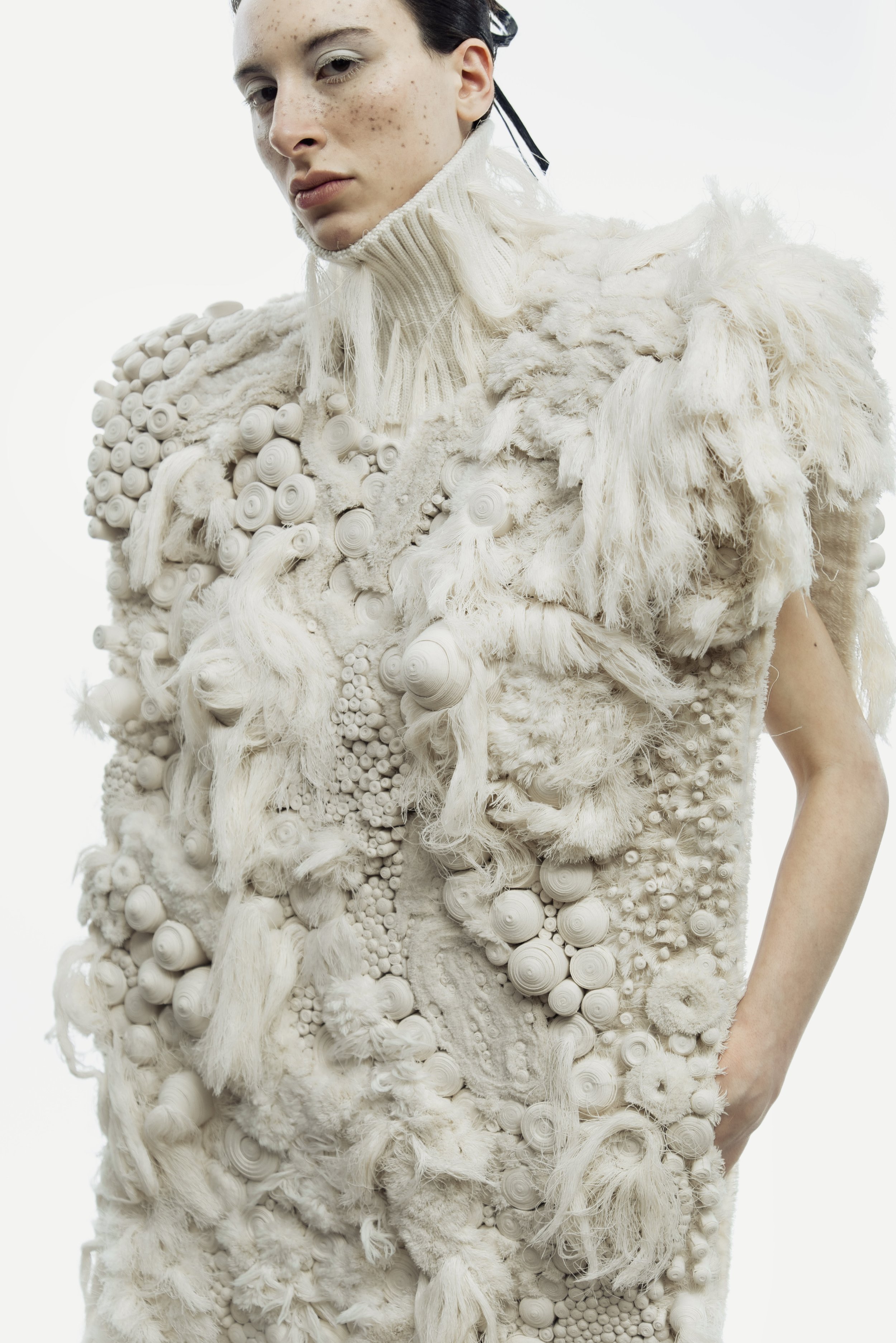Talent Talks: Filippa Geslin
Filippa Geslin’s work draws inspiration from Danish Christian art and her aunt’s pastoral work, considering craft as prayer. Using humble materials like cotton calico scraps, Geslin transforms them into precious, abstract forms celebrating femininity. She collaborates with artisans, honoring craftsmanship, community, and the spiritual essence of creation.
Image by Basil Perot
Could you please introduce yourself?
I am 24 years old and I am French and Danish. I grew up learning from my french grandparents about creation as they where working together as interior textile designers for a luxury company in Paris.
On the other hand, I feel inspired by the Scandinavian minimalism and deep bound to nature. I used to spend vacation in my danish grandparents farm, spending hours playing by myself and walking around in the fields.
Creation has always been part of me as a third language to express everything I had in me, and I have always experimented a lot with my clothes in the search of a personal identity and being inspired by both fashion and craftmanship.
Image by Jules Lè Van Nhuong
Having graduated recently, how do you look back on your studies?
During my studies in Denmark (Design Skolen Kolding) I learned about responsible fashion and from my internship in fashion brands in Paris I grew my sensibility for textures and materials. During my Master in Paris, it felt important to always have a critical approach on how the fashion industry produces clothes. I took an extra curriculum within entrepreneurship and participated in the development of a project that aims to produce responsible textiles for the large market made from cactus considered as weeds.
The master studies has however also led me to explore my sensibility for artisanal work and artistic expression which has guided me for my graduation project.
Image by Basil Perot
Which materials, techniques, programmes and/or applications are you mostly interested in?
I’m interested in crafting materials into giving them a new appearance or texture. Through the manipulation of materials I explore embroidery, weave, molding or even patchwork. I like feeling an seeing the garment coming to life piece by piece through a slow process where there is always space for intuition.
The exhibition you are a part of looks into meaning of regeneration. What does regeneration mean to you and your work?
I associate regeneration to transformation in my work and I use it as a playground that allows me to explore possibilities.
I am concerned about the impact of our industry, therefore regeneration feels like an opportunity to produce with better care for the environment, rethinking about our process and the social/human aspect, together with the new generation of designers I am part of.
In that way the notion of regeneration can apply for the ressources we design and create with but also the process.
Image by Jules Lè Van Nhuong
How do you perceive the meaning and importance of community within the fashion field?
The first step to creation is respect for each other. We need to share ideas and inspire each other so we can build a better industry.
How do you view the future of fashion? And your own role therein?
We are more and more aware of what is wrong and what we need to change in the fashion industry. Some sees it as a creative burden but for me it should be seen more as a new frame to develop our creativity, a frame that is actually helping us not being repetitive of what has already been done.
I am excited to see what we can create. I aim to take a role in that generation of fashion designer by using my sensitivity for materials.
Image by Basil Perot




